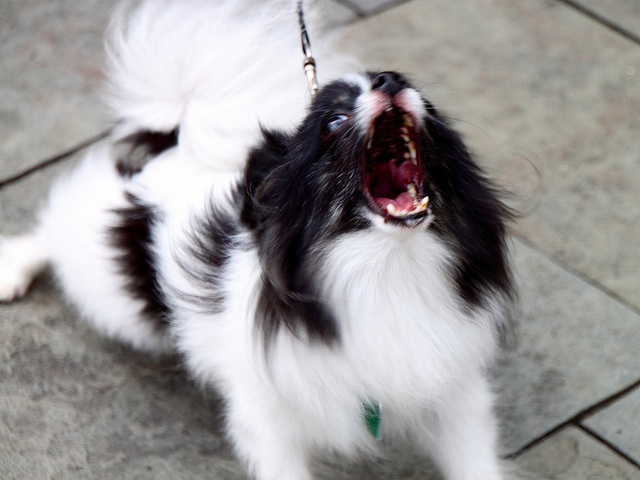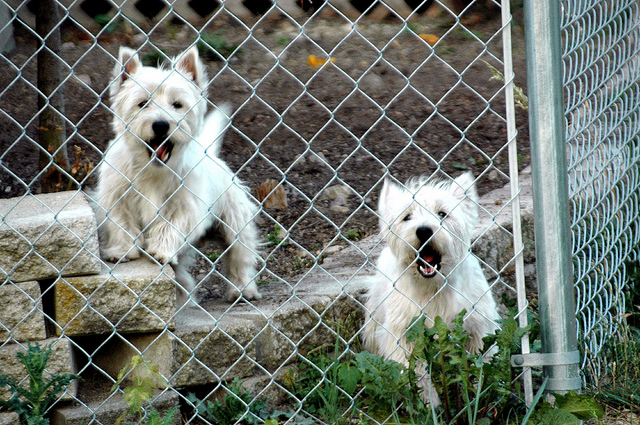This question is a BIG one. It can be a reason a dog is taken to the shelter or debarked by a frustrated pet parent. It’s also one I get asked a LOT as a dog trainer.
Unfortunately, the answer is not as simple as we’d like it to be. There can be a varying range of reasons why dogs bark at other dogs. What we will do today is try to provide more insight into that question so that you as an owner will be as informed as possible.
Why Dogs Bark At Other Dogs
There are many reasons why a dog may bark at another dog:
- Fear
- Excitement
- Aggression
- Reacting to another dog barking

And, it could be a different reason each time your dog barks. Sometimes, he may be excited (say he sees his best friend coming up the driveway for a play date), other times he may be afraid (a big, loose dog heads straight for him on a walk), etc.
The reality is, you may never know for sure why your dog is barking at another dog.
So How Do You Stop A Behavior If You Don’t Know The ‘Why’?
No matter how much we treat our dogs like children, they are still a dog and there is no real way to know what they are thinking.
Luckily, positive reinforcement training does not require you to know the “why.” This is because it focuses on the solution – what you want your dog to be doing instead of what he is currently doing.
So, in this case, you want a dog that is calm and quiet around other dogs.

To get this, you are going to ignore the behavior you don’t like (barking, growling, whining) and reward your dog for the behavior you want – calm and quiet.
However, don’t be fooled. This isn’t easy.
Timing and Distraction Level is EVERYTHING
In order to teach your dog to not bark at other dogs, you need to start in an environment where your dog is comfortable enough to not bark at a dog he can see (hear, smell, etc). For some dogs, this may mean a closed room and just ten feet away. For others, you may have to be outside and 50 yards away. For my one sheltie, it meant playing a recording of a dog he can’t smell or see – just a low bark was enough at first.

Finding that baseline is important because in order to reward your dog for being calm and quiet around dogs he has to actually be calm and quiet around dogs.
Once you find your baseline and can reward your dog before he has a chance to react, you can gradually start to shorten that distance and/or change the environment as long as your dog is successful. THIS TAKES TIME!

You will also have to remember that the longer your dog is in that environment, the harder it may get for him. So, your dog may be fine with a dog ten feet away for 3 seconds, but after that may start to whine, bark or growl. So keep training sessions short.
Professional Help
So, while the answer is yes, you can teach your dog to not bark at other dogs, you will find it must easier if you get professional help.
Look for a certified professional dog trainer (CPDT) and/or animal behaviorist that uses positive reinforcement techniques. The Certification Council For Professional Dog Trainers has a database you can search to find a CPDT in your area. Ask them what their history is working with reactive dogs and the methods they use. Ask if you can sit in on a lesson so you can watch them work.
Don’t be afraid to shop around and make sure they are a good fit for you and your dog – if you aren’t comfortable, your dog won’t be either.
